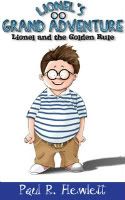 |
| Karen Rose Smith, romance fiction author, has sold 82 books since 1992 as well as Indie published her Search for Love series. |
--Choose
a strong background that affects who your character is, how he or she sees
life.
For
instance, if your hero is a former Marine, he had motivation to serve his
country. Focus on that. He also had training that colors how he sees the world,
how he reacts when startled, how he sleeps, how he organizes his belongings,
how he problem-solves.
If you
have a heroine who lost her parents and was shuffled into the foster care
system, she will most likely have trust issues, fear of abandonment and,
therefore, she will protect her heart.
--Give
your characters life-long passions.
Example:
One of my recent heroines is a music therapist. Music has always been an escape
for her, a joy, a means of expressing herself. I use music imagery in her
thoughts, especially when she and the hero have intimate moments.
If your
hero hikes for a hobby, that face-the-wilderness passion will charge his goals
and his passion. He will be detail-oriented and maybe adventurous in his
business undertakings.
--Create
family bonds
If your
hero has sisters, that can affect his reactions to women, his understanding of
their motives and fears. If your heroine has brothers, maybe she was a
tag-along, or a tomboy in order to earn her brothers' respect. If your
characters' parents have a happy marriage, they will look at a relationship as
a forever possibility. On the other hand, if parents divorced, that could crete
a negative rather than positive view of marriage.
--Personality
quirks
Everyone
has idiosyncrasies. What are your characters' quirks?
Maybe
your heroine likes to sing in her car. Maybe your hero always has a cup of
coffee as he watches the sunrise. Why do they do these things? What created
their habits? Weave their story around their present life so nothing is random.
--Former
romantic relationships
The lack
of romantic relationships reveals that your character might be afraid of
commitment. On the other hand, former relationships have taught your character
something about love. Whatever they learned or felt will fuel the conflict in
their romantic relationship now. You can use this history to make tension high
and to create impediments to finding true love.
--Physical
perfection or imperfection.
A model
will have a different view of life than a heroine with a port wine stain on her
face. A hero with war injuries will look at himself differently than a man in
buff shape. Give your character a distinctive physical characteristic--deep
tan, long waist, brown hair with blond strands, a scar above a brow.
When you
create a character, every detail in his or her past, every detail about his or
her life now should have a purpose. If you meld these tips and create a
"real" person with a heart, soul, and mindfulness of who they are, you
will create memorable characters.
Karen Rose Smith
Karen Rose Smith
was born in Pennsylvania in the Susquehanna Valley. As a teenager, music became
as important to her as reading. She and her cousin took their first sojourn
into writing by collaborating on a script for the MONKEES television program.
They sent that script to every concert venue where the group appeared
that summer!
In college, Karen
began writing poetry and also met her husband to be. They both started
married life as teachers, but when their son was born, Karen decided to try her
hand at a home decorating business. She returned to teaching for a while
but changes in her life led her to writing romance fiction. She has sold 82
books since 1992 as well as indie published her Search For Love series.
A winner of New
Jersey's Golden Leaf Award in Short Contemporary Romance, Colorado Romance
Writers Award Of Excellence for short contemporary, as well as the
Phoenix Desert Rose Chapter's Golden Quill for Traditional Romance, she has
also been honored with Cataromance.com's award for Best Special
Edition. Her romances have made both the USA TODAY list, Borders Group
Bestseller list for Series Romance as well as the Amazon Contemporary Romance
Bestseller list.
Married to her
college sweetheart, believing in the power of love and commitment, she
envisions herself writing relationship novels (including mysteries) for a long
time to come!
LINKS:
Karen's website: http://www.karenrosesmith.com/
Karen's Blog: http://karenrosesmith.blogspot.com/
Karen's e-zine: http://karenrosesmith-ezine.blogspot.com/
Karen's Search For Love Series website: http://www.searchforloveseries.com/
BUY link for NATHAN'S VOW: http://www.amazon.com/Nathans-Vow-Search-Love-ebook/dp/B005EZCK54/ref=sr_1_1?ie=UTF8&qid=1334178152&sr=8-1
BUY link for WHEN MOM MEETS DAD: http://www.amazon.com/When-Mom-Meets-Dad-ebook/dp/B007RFI7H4/ref=sr_1_1?s=digital-text&ie=UTF8&qid=1334178178&sr=1-1


